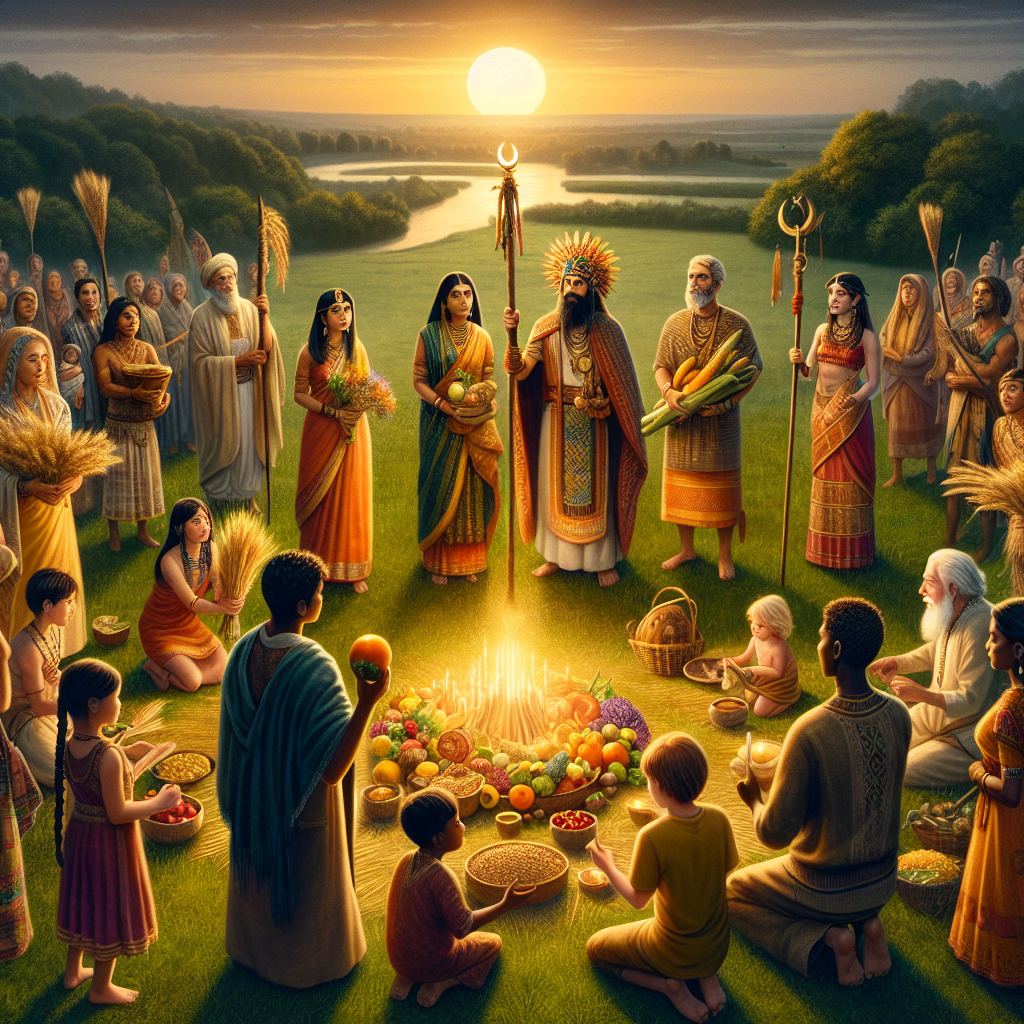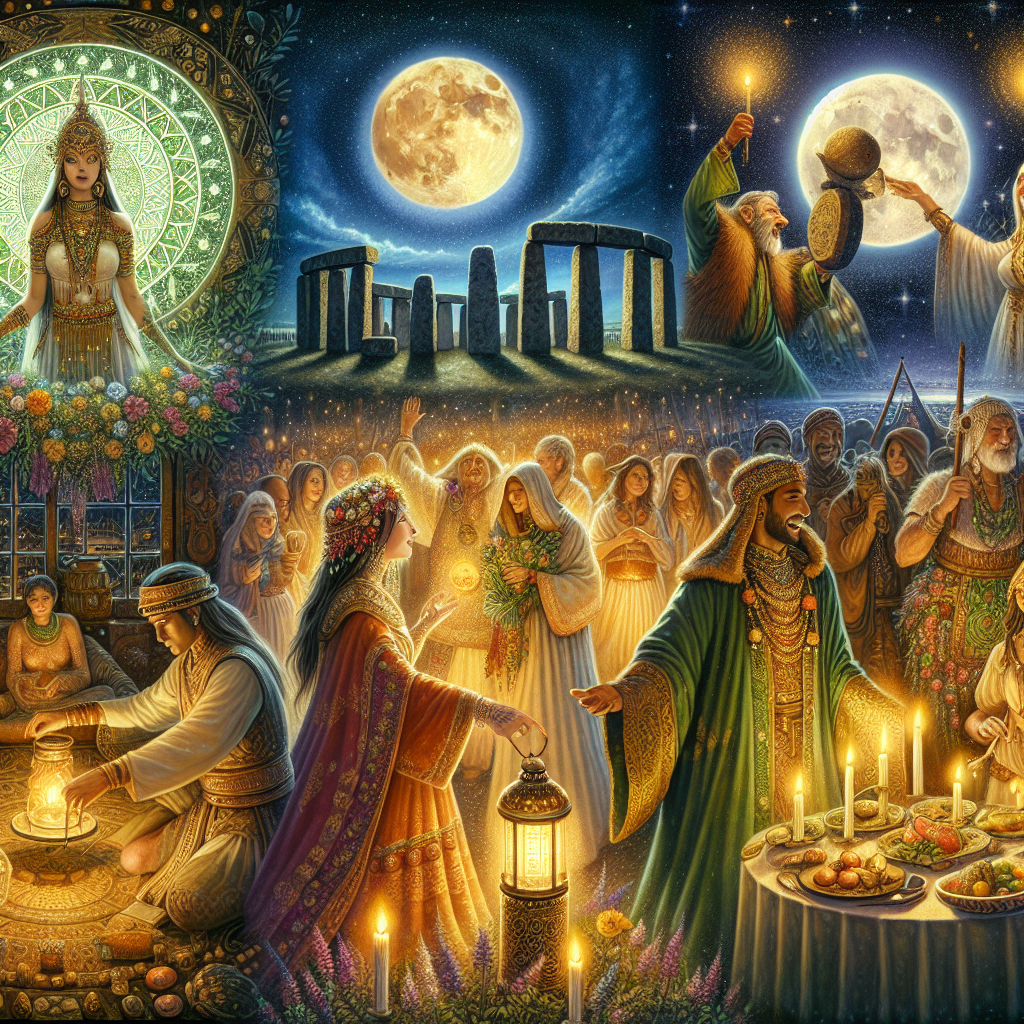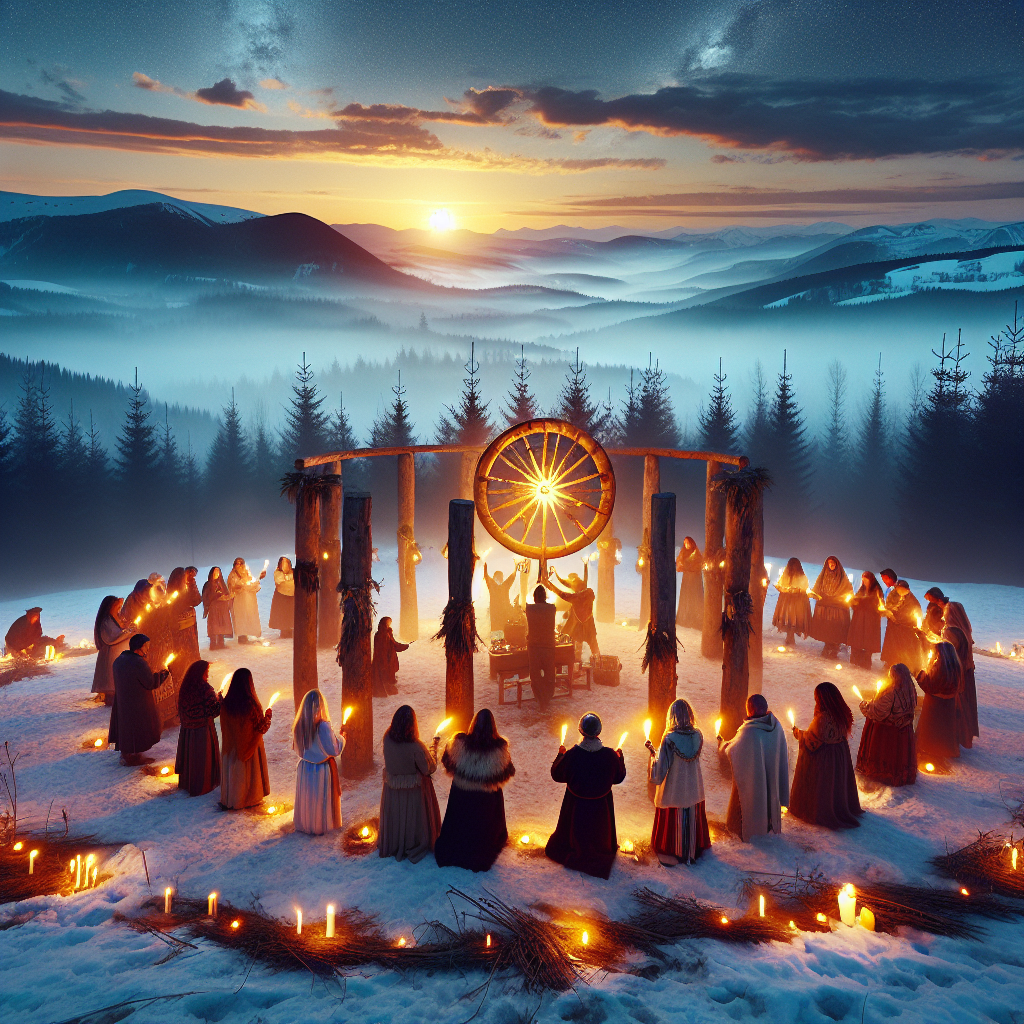As an Amazon Associate I earn from qualifying purchases.

The summer and winter solstices, which occur around June 21 and December 21 respectively, are considered sacred times in many cultures around the world. These pivotal moments in the Earth's celestial dance, marking the longest and shortest days of the year, have been venerated by humankind for thousands of years. Solstice ceremonies, traditions, and rituals for reconnection are born out of these universal recognitions and held with the intention of aligning ourselves with nature and her rhythms.
Historically, solstice ceremonies were used as a spiritual tool to connect with the natural world and cosmos, to seek guidance, and to express gratitude. These practices, many of which are believed to date back to the Stone Age, were considered vital for survival and were woven into the fabric of everyday life. At these times, individuals would gather in community for various rituals of reconnection including feasts, dances, storytelling, and even nighttime vigils.
Though modern society often overlooks these ancient observations, the significance of the solstice and its corresponding rituals are being increasingly recognized. Today, it is estimated that thousands of individuals participate in solstice ceremonies worldwide ranging from private rituals at home to large communal gatherings at sacred sites like Stonehenge. In fact, a 2019 survey found that one out of three Americans has attended a solstice celebration, reflecting a growing public interest in reconnecting with nature and ancient traditions.
These ceremonies often involve a mix of old and new customs, imbued with a shared intention of connection. One common practice is light rituals which involve the lighting of candles or bonfires as an act of reverence for the sun. Similarly, participants may also fast, reflect, and meditate into the night to honor the symbolic death and rebirth associated with the solstice. Additionally, many people create altars, make offering, or embark on spiritual journeys to come into alignment with the energy of the season.
It's fascinating to realize how in an age of sweeping technological advancement and social complexity, the simple act of marking the solstice remains an enduring link to our ancestors. These solstice ceremonies, despite the myriad of traditions and rituals they encompass, all share the core aim of reconnection—reconnection to the cosmos, to nature, and, ultimately, to our own innate wisdom. As we continue to oscillate between tradition and progress, it seems these rituals remind us of universal truths about time, nature, and our human place within it all.
What Are Solstice Ceremonies? Exploring Traditions and Rituals to Reconnect
Solstice ceremonies are unique and vibrant events, rich in cultural customs and religious heritage that occur during the summer and winter solstice periods. These ceremonies traditionally mark the two periods in the year where the tilt of the Earth's axis is most inclined toward or away from the sun, resulting in the longest day or the longest night of the year. These celebrations, deeply rooted in natural rhythms and universal symbology, serve as important markers for societal and spiritual practices across various cultures globally. Many people utilize these ceremonies as an opportunity to reconnect with nature, ancestral wisdom, and inner self. The rituals and traditions that accompany solstice ceremonies offer a tangible way to acknowledge and experience our place within larger cycles of time and natural phenomena. In the following sections, we will comprehensively elucidate the significance, traditions, and rituals of solstice ceremonies across various cultures and religions, reflecting on how these practices encourage us to reconnect with our human roots and recognize the broader interconnectedness of all life.
Solstice Ceremonies: Traditions and Rituals to Reconnect
Solstice ceremonies are historical rituals observed by cultures worldwide that celebrate the natural world's cyclical nature. They occur twice a year, during the Winter and Summer solstices, marking the shortest and longest days of the year, respectively. These ceremonies serve as an opportunity to pause, reflect, and reconnect with the Earth, oneself, and the community.
Winter Solstice Ceremonies
Winter solstice ceremonies often symbolize rebirth and the return of the sun. One well-known ceremony traces its roots back to the ancient Celts and Druids: the Yule ceremony. This ritual involved burning a Yule log, a tradition originating from the old Germanic peoples. The Celts believed that the sun stood still for twelve days in the middle of winter and during this time a log was lit to conquer the darkness and banish evil spirits. Today, some modern Pagans and Wiccans continue to celebrate Yule by lighting a Yule log, symbolizing the rebirth of the sun and the return of light.
In many Native American cultures, the winter solstice is marked with the Soyal ceremony. The Hopi and Zuni tribes in North America host a solstice ceremony that focuses on welcoming protective spirits, known as Kachinas, back to the world. The ritual includes traditional dances, storytelling, and the giving of prayer sticks, symbolic tools used for blessings and connection with the spiritual realm.
Summer Solstice Ceremonies
Summer solstice ceremonies, on the other hand, celebrate the peak of the sun's power and the abundance of nature. In Sweden, Midsummer is a key holiday characterized by decorating with flowers, dancing around a Maypole, and sharing a feast with loved ones. Similarly, in the UK, Stonehenge is a popular destination for the summer solstice. Thousands gather every year to watch the sunrise align perfectly with the Heel Stone, a moment that has been celebrated for thousands of years.
Many Native American tribes, such as the Sioux, mark the summer solstice with a Sun Dance. This ritual is a time for healing and renewal, both personally and for the Earth. It can last several days and involves fasting, physical sacrifice, and, of course, dancing.
Importantly, both winter and summer solstice ceremonies provide ample opportunities for renewal and connection. They remind us of the cyclical nature of life and offer a moment to reconnect with the Earth, our communities, and our inner selves.
The enduring relevance of such rituals can be seen in the statistics. Despite people becoming more urbanized and digitized, the number of individuals attending solstice ceremonies at classic sites like Stonehenge still increases annually. According to the English Heritage, the number of attendees at the Stonehenge Summer Solstice event rose by approximately 20% in the five years between 2015 and 2020.
1.
What is a solstice ceremony?
A solstice ceremony is a ritual or celebration that corresponds with the timing of the summer or winter solstice. It is a tradition observed in many cultures worldwide, often meant to honor the sun and the changing of the seasons.
2.
Why do people celebrate solstice ceremonies?
People celebrate solstice ceremonies as a way to connect with the cycles of nature, harnessing the energies that come with the changing seasons. They often symbolize rebirth, renewal, and gratitude.
3.
What are the common traditions and rituals involved in a solstice ceremony?
Common traditions and rituals may involve bonfires, meditation, dancing, singing, and feasting. These activities vary greatly among different cultures and individuals.
4.
Can I host my own solstice ceremony?
Yes, you can certainly create your own solstice ceremony. It can be a personal ceremony or shared with loved ones. It’s a beautiful way to connect with nature and mark the transitions of the natural world.
5.
What is the significance of the solstice in spiritual terms?
In spiritual terms, solstices often signify times of change, growth, and transformation. It is a time to reflect on the past seasons and plan for the ones to come.
6.
Is there a specific attire or decor recommended for a solstice ceremony?
Attire or decor for a solstice ceremony often resonates with the earth and nature, but it generally depends on one's tradition or personal preferences. One might choose to adorn their space with seasonal flowers, fruits, and decorations symbolizing the sun.
7.
When are solstice ceremonies typically held?
In the Northern Hemisphere, the summer solstice usually occurs around June 21, while the winter solstice happens around December 21. The exact dates vary each year and in different hemispheres.
8.
Who usually participates in solstice ceremonies?
People from various spiritual paths and cultures celebrate solstice ceremonies. However, anyone who appreciates nature and wants to connect more deeply with the earth's cycles can participate.
9.
Can kids take part in solstice ceremonies?
Absolutely, kids can take part in solstice ceremonies. These celebrations can be a valuable opportunity for them to learn about and connect with the rhythms of nature.
10.
Are solstice celebrations associated with any religion?
While certain religions and spiritual traditions celebrate the solstice, such as Paganism and Druidism, the celebration of the sun and the earth's cycles transcends religious boundaries and can be enjoyed by anyone.

Embracing the Solstice through Celebratory Rituals and Traditions
Solstice ceremonies, deeply rooted in ancient cultures and religions, offer a unique opportunity to reconnect with the natural world and to foster a greater sense of harmony and balance in our lives. From the Aboriginal walkabouts in Australia to the Inti Raymi festival in Peru, these celebrations use symbolic rituals to discern the shifting balance between light and darkness, thereby encouraging a deeper appreciation for the life-giving energy of the sun. Across cultures, these celebrations are the cornerstone of community bonding, spiritual reflection, and gratitude, adding a meaningful dimension to the cyclical patterns of life.
Solstice celebrations also serve as a reminder of our shared humanity and interconnectedness with the environment. Each ceremony, be it with its distinct practices and rituals, is centered around the universal respect for the power of nature and the significance of the solstice as a potent time of transition and transformation. Through honoring the sacred bond between the earth and its inhabitants, these traditions advocate for environmental consciousness, encouraging societies to adopt sustainable practices. Therefore, reinstating such solstice ceremonies in our modern lifestyles can provide the impetus for a reinvigorated relationship with the earth, promoting peace, unity, and reverence for the world we all share.
Amazon and the Amazon logo are trademarks of Amazon.com, Inc, or its affiliates.


